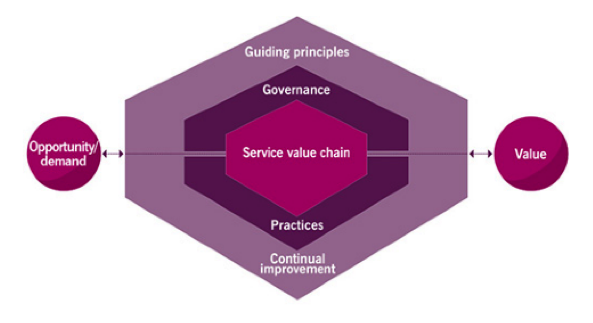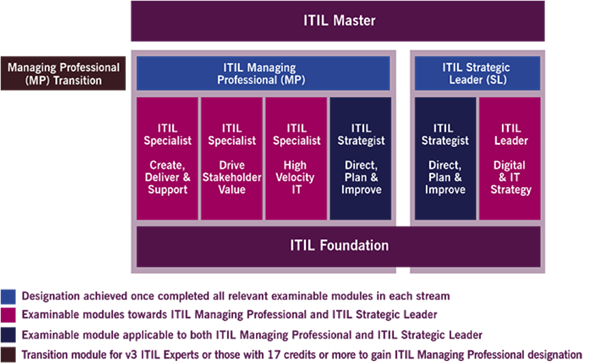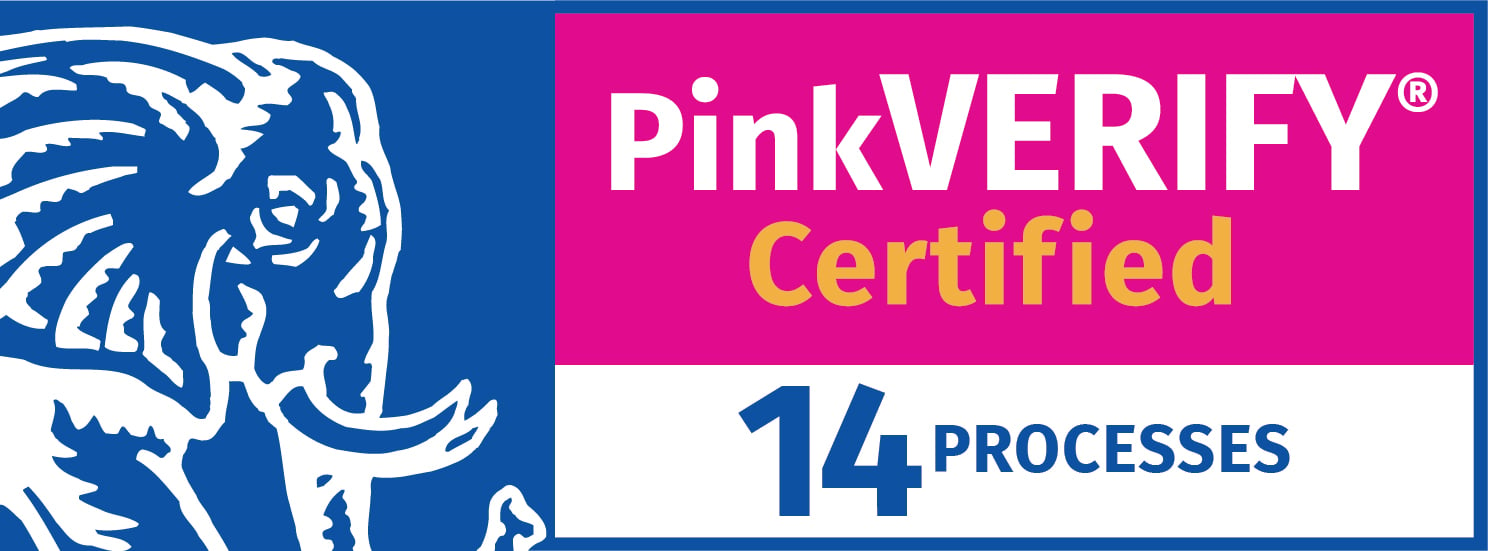How ITIL 4 Is Different from ITIL V3
ITIL 4 represents a fundamental reorganization of the ITIL framework with an increased focus on the concepts of value, cost, and risk. The new framework includes many of the same components as ITIL V3 while incorporating updated knowledge and concepts that reflect a more value-oriented focus to IT service delivery.
The most obvious changes in ITIL 4 are the loss of the ITIL V3 service lifecycle terminology and imagery, and changes to the elements that comprised it: service strategy (there’s now a strategy management practice—more on “management practices” in a minute), service transition (there’s now “Design and transition” in the service value chain shown below), and service operation (there’s now “Delivery and support” in the service value chain). The most significant structural update to ITIL is the organization of the framework around two core components: the ITIL Service Value System (SVS) and the Four Dimensions Model.
The new ITIL Service Value System describes the chain of activities necessary to convert a business opportunity or demand for a service into business value. The IT service lifecycle has been refined into a new operational model known as the ITIL Service Value Chain that acts as the core component of the SVS. These changes reflect ITIL 4’s new focus on “the co-creation of value.”
Service Value System


Source: AXELOS, “ITIL Foundation, ITIL 4 Edition” (2019)
The Four Dimensions Model is a new version of the 4P's Model that was represented in ITIL V3, which included people, products, partners, and processes. The Four Dimensions Model addresses:
- Organizations and people
- Information and technology products
- Partners and suppliers
- Value streams and processes
IT organizations are encouraged to assess the impact, value, costs, and risks associated with each of the 4Ps in each component of the service value system.
As to the “management practices” point above: first, the 26 ITIL V3 processes have been replaced with ITIL 4 management practices. Some of the V3 processes have maintained their ITIL V3 name, while others have been renamed, and new processes have been added. There are now 34 management practices in total—divided into general management, service management, and technical management categories.
In "ITIL® Foundation, ITIL 4 Edition," a guide put out by AXELOS, these management practices are defined as: “A set of organizational resources designed for performing work or accomplishing an objective.” So, more than the processes of old.
Take a look at a quick summary of the management practices:
|
General management practices
|
Service management practices
|
Technical management practices
|
|
Architecture management
|
Availability management
|
Deployment management
|
|
Continual improvement
|
Business analysis
|
Infrastructure and platform management
|
|
Information security management
|
Capacity and performance management
|
Software development and management
|
|
Knowledge management
|
Change control
|
|
|
Measurement and reporting
|
Incident management
|
|
|
Organizational change management
|
IT asset management
|
|
|
Portfolio management
|
Monitoring and event management
|
|
|
Project management
|
Problem management
|
|
|
Relationship management
|
Release management
|
|
|
Risk management
|
Service catalogue management
|
|
|
Service financial management
|
Service configuration management
|
|
|
Strategy management
|
Service continuity management
|
|
|
Supplier management
|
Service design
|
|
|
Workforce and talent management
|
Service desk
|
|
|
|
Service level management
|
|
|
|
Service request management
|
|
|
|
Service validation and testing
|
|
Source: AXELOS, “ITIL Foundation, ITIL 4 Edition” (2019)




